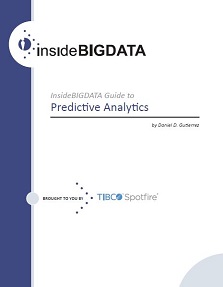I recently caught up with Ankur Goyal, Vice President of Engineering at MemSQL, to get an inside look at the new era of predictive analytics. Ankur runs engineering at MemSQL. He was one of the first employees at MemSQL starting in 2011, and has actively driven growth of the team since then.
Text Analytics without Tradeoffs
The pace at which the world creates data will never be this slow again. And much of this new data we’re creating is unstructured, textual data. Emails. Word documents. News articles. Blogs. Reviews. Research reports… Understanding what’s in this text – and what isn’t, and what matters – is critical to an organization’s ability to understand the environments in which it operates. Its competitors. Its customers. Its weaknesses and its opportunities.
Predictive Modeling and Production Deployment
Using predictive analytics involves understanding and preparing the data, defining the predictive model, and following the predictive process. Predictive models can assume many shapes and sizes, depending on their complexity and the application for which they are designed. The first step is to understand what questions you are trying to answer for your organization.
Data Access and Exploratory Data Analysis
Enterprise data assets are what feed the predictive analytic process, and any tool must facilitate easy integration with all the different types data sources required to answer critical business questions. Robust predictive analytics needs to access analytical and relational databases, OLAP cubes, flat files, and enterprise applications.
Predictive Analytics Software and R
There is a vast array of predictive analytics tools, but not all are created equal. Software differs widely in terms of capability and usability — not all solutions can address all types of advanced analytics needs. There are different classes of analytics users — some need to build statistical models, others just need to use them.
Classes of Predictive Analytics
This article is the third in an editorial series that will review how predictive analytics helps your organization predict with confidence what will happen next so that you can make smarter decisions and improve business outcomes.. It is important to adopt a predictive analytics solution that meets the specific needs of different users and skill sets from beginners, […]
Business Uses of Predictive Analytics
The need for predictive analytics in the enterprise is clear, as it can provide smarter analysis for better decision making, increased market competitiveness, a direct path in taking advantage of market opportunity and threats, a way to reduce uncertainty and manage risk, an approach to proactively plan and act, discovery of meaningful patterns, and the means to anticipate and react to emerging trends.
insideBIGDATA Guide to Predictive Analytics
In this new Guide to Predictive Analytics we will review how predictive analytics helps your organization predict with confidence what will happen next so that you can make smarter decisions and improve business outcomes. It is important to adopt a predictive analytics solution that meets the specific needs of different users and skill sets from beginners, to experienced analysts, to data scientists.






